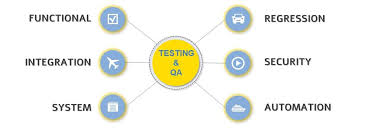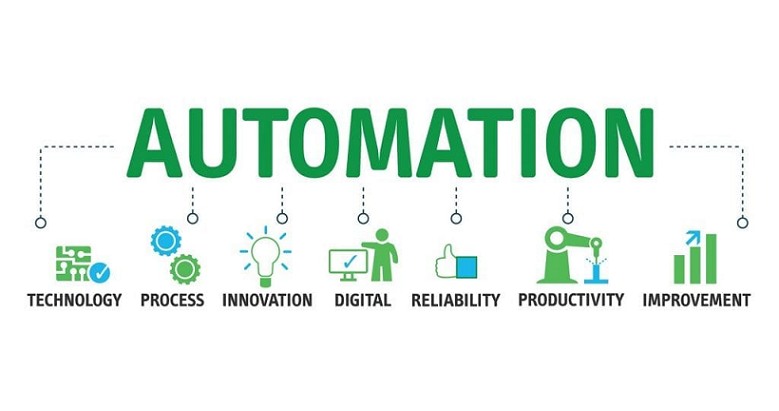Introduction
The concept of automation has been in the human race for generations, but the 21st century is being swayed by it. We are living in a world driven by automated items around us, such as smartphones and even smart electronics. Things are getting done by the touch of fingers and are evolving with voice control as well.
But have you wondered why the software development world witnessed such a gasp of automation? Keep reading to understand automation, its various software tools, and how it makes things perfect as we see them today.
What is Automation?
Going by dictionary meaning, automation allows any process, system, or apparatus to complete its job automatically. Implying minimizing the usage of human effort in doing even the simplest tasks.
But here’s what can surprise you. Though automation is implemented in areas such as networking, security, and even robotics, it has found its irrepressible application in the world of process automation as web usability testing services.
When developing software or a web application, it requires a tremendous amount of energy, time, and resource to establish that the tool is working as expected. Hence, to meet the call of testing, the concept of test automation came up and became popular in no time. Uber-like Food Delivery App web application automated testing can help ensure quality and reliability.
Every button, feature, and functionality of the tool is tested during the testing phase. But as the world is making a leftward shift in SDLC, automation testing is prevailing day-by-day. With accessibility testing service and automation tools at hand, test cases are completed in minimum time in both positive and negative scenarios.
Understanding Automation Testing Types in Web Development
Though automation testing has found its usage in every phase of the software development cycle, it is popular towards advanced stages. However, we aim to learn about every type of automation testing types, its possible impact in web usability testing services with some of the commonly used ones:
1. Unit Testing
As the name suggests, unit testing is about testing individual units of the web application. Unit testing is more common during the development phase of the tool. Though, in general, they were written by developers themselves, but these days skilled testers also write them. Trends for mobile apps in web application automation include the use of AI and ML to improve test coverage and efficiency. It is the very first phase of testing in an SDLC, and post-testing, and reaches the next stage.
2. Smoke or System Testing
This talks about the environment a web application is deployed in. If the developers are keen on automation testing, checking the stability of the deployed build can also be automated.
It eases out the role of checking permissions, structures, and access for completing further stages of testing which are considered a crucial part of the product.
3. Functional Testing
Going by the name, it deals with testing all the functionality of the web application. In general, it covers areas such as API testing, UI testing, DB-related functionalities, and inclusive functionality of the web tool. The various automated testing tools come in handy in this phase of testing.

Automated Testing types
4. Integration Testing
Now those individual modules are well-tested with a stable deployed build for a functional website; it is time to test the application as a whole. All the individual modules are integrated to pull up the website and make it ready for the audience. This type of testing emphasizes the successful communication between the different modules of the web application.
5. Regression Testing
This is performed in scenarios when an existing code is updated to meet some requirements. Though the requirement is in the limelight and is well tested yet sometimes these updates impact other functionalities of the application. Hence, the complete web application is tested to ensure that nothing is impacted due to recent code changes.
Important Automation Testing Tools in Web Development
Now that we understand the various aspects and importance of testing, we can now work upon implementing these to save our manual effort; for this, one can look forward to the different automated testing tools.
However, depending upon the requirement, it might take some time to figure out which one is best suitable for your needs. Hence, to save some effort, we have listed the world-best automation testing software that you may consider
1. Selenium:
This one is known worldwide as an easy-to-use and open source testing tool. This offers a testing automation framework that can help to test several cases in parallel with appropriate test runners.
Selenium is also well-known for its compatibility with several languages such as Java, Python, C#, Ruby, Perl, and even JavaScript. Test cases written in suitable languages can be used to interact with the browser via Selenium.
An added advantage is that it works with almost every browser when working with web applications and provides ease of accessibility testing service.
2. Ranorex:
This is one of the best for automation testing as it works for not only web applications but also mobile and desktop testing. It is a user-friendly tool that does the job for automated UI testing, regression testing, and even data-driven testing. Web application development automation enables teams to streamline and accelerate the development process.
Another feature that makes Ranorex one of a kind is that it supports cross-browser testing with a near-perfect ready-to-use interface.
This tool also supports integration with the software industries platforms like Travis, Jira, Jenkins, and others.
3. Test Complete:
This is the first of its kind when we talk about various software tools in automation. It works on a hybrid model based on visual and objects recognition systems.
It is preferred as a UI testing tool that helps create, maintain, and run functional test cases for all kinds of web applications.
It offers to record and playback the automated UI tests that are supported by browsers such as IE, Edge, Google Chrome, and Opera.
Conclusion
With automation testing service taking software development by storm, it has opened new opportunities. It now allows the development team to collaborate with the testing team easily and present a thoroughly tested web application; all of this with improved efficiency and the final product.



